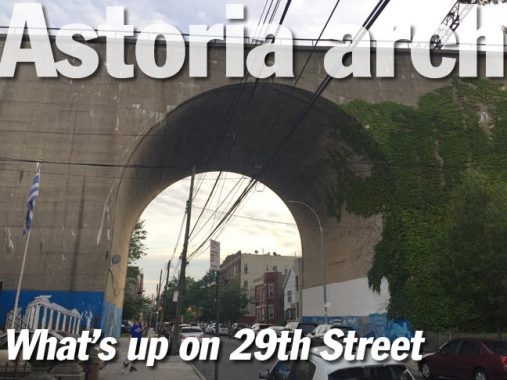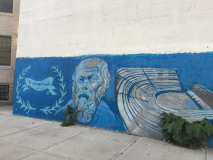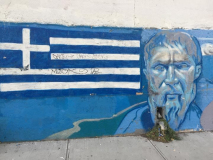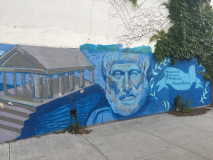I have always considered the massive concrete arches that lift railroad tracks to the Hell Gate Bridge over the streets of northwest Astoria almost as imposing as the arch bridge itself. Tracks, arches and bridge were constructed from 1914-1917 and connect Pennsylvania Station, the Sunnyside Yards, and southern Queens with the northeast United States. Presently, Amtrak passenger and fright trains use the Hell Gate to cross from Astoria to Port Morris, Bronx via Randalls Island.
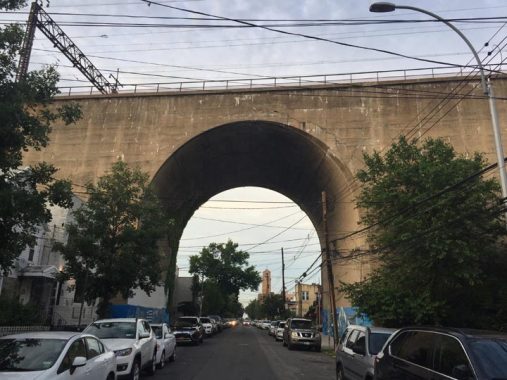
I don’t know why the builders decided to use massive concrete arches on some streets, and iron trestles on others. The westernmost of the arches, and the highest one, can be found on 29th Street one block west of the Astoria elevated carrying the N and W trains (indeed another such arch spans both the elevated train and 31st Street, a feat accomplished by building both concurrently). I have always found it irresistible for the camera.
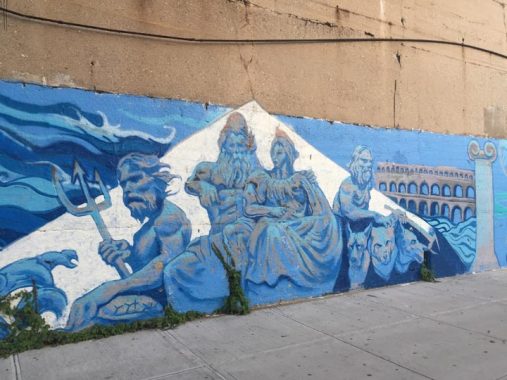
Artwork by Jorge and Marthalicia Matarrita honoring Astoria’s Greek-Americans can be found facing the sidewalks under the arch. This panel depicts Poseidon and his trident, Zeus and Hera, and Hades with his watchdog, the three-headed Cerberus.
Across the street, more panels show famed Greek philosophers, an amphitheater, temple and a Greek flag.
Next to the arch, the Greek Stathakion Center is described as “a community center with theatrical stage fully equipped with lights, sound, video projection and other accommodations for live performances and cultural functions on the second level and a performance, meeting hall on the main level.” The Greek-American Folklore Society is located here as well.
You know what, I had never thought before to stand on a street under one of these massive arches and aim the camera up at its underside. This is what it looks like from that angle.
On the corner of 29th Street and Ditmars Boulevard, a building entrance is inscribed “Singer Apartment.” Practically no one in Astoria knows that the name denotes a bit of Astoria history, but it has nothing to do with Singer sewing machines.
Before the current Queens street numbering scheme was adopted in dribs and drabs mostly in the 1920s, Astoria’s streets passed through a variety of names. 29th was Lawrence Street but it was also Singer Street, and that’s where the building name comes from.
Check out the ForgottenBook, take a look at the gift shop, and as always, “comment…as you see fit.”
6/26/19
